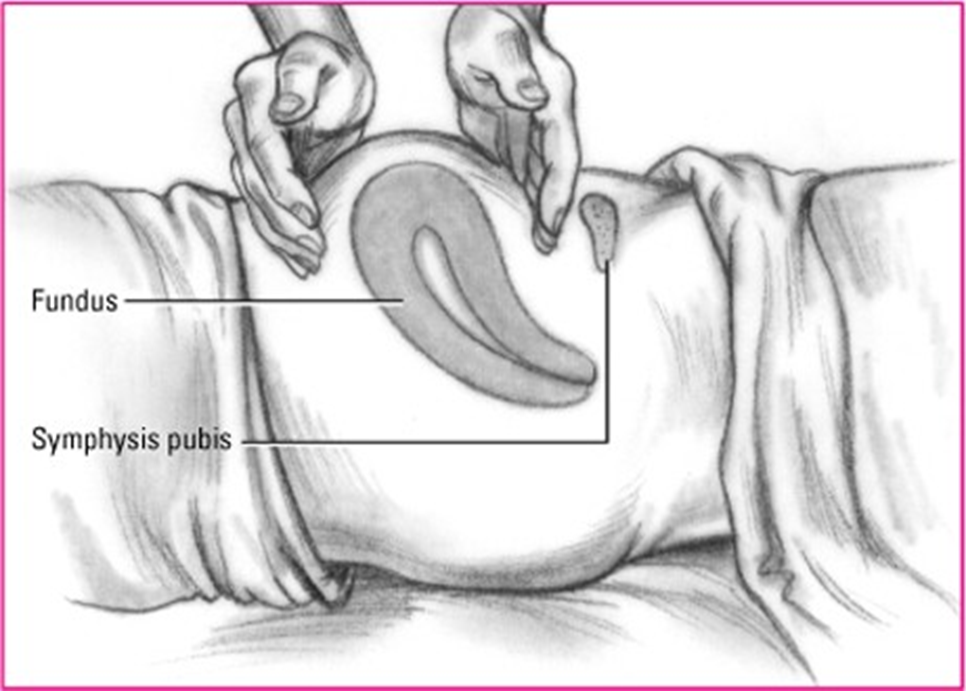A nurse is assisting with the care of a client who is in labor.
Which of the following findings should the nurse report to the provider?
Contraction lasting 85 seconds
Contraction resting period 35 seconds
Heart rate 100/min for a 10-min period
One contraction in a 10-min period
The Correct Answer is A
Choice A rationale:
Contraction duration: Contractions that last longer than 75 seconds are considered abnormal and should be reported to the
provider. This is because prolonged contractions can decrease oxygen supply to the fetus, leading to fetal distress.
Risk of uterine rupture: Excessively long contractions can also increase the risk of uterine rupture, a serious complication that
can endanger both the mother and the fetus.
Signs of fetal distress: The nurse should closely monitor the fetal heart rate for any signs of distress, such as late decelerations,
decreased variability, or bradycardia.
Need for intervention: If the contractions remain prolonged or if fetal distress is detected, the provider may need to intervene
to ensure the safety of both the mother and the fetus. This could involve measures such as administering medications to stop
or slow down labor, or performing a cesarean delivery.
Choice B rationale:
Contraction resting period: A contraction resting period of 35 seconds is within the normal range. Ideally, the resting period
between contractions should be at least 60 seconds, but it can vary. However, a resting period shorter than 30 seconds could
be a sign of tachysystole (excessively frequent contractions), which may also require intervention.
Choice C rationale:
Maternal heart rate: A maternal heart rate of 100 beats per minute is considered normal during labor. Heart rate can increase
with exertion, pain, and anxiety, which are common during labor. However, it's important to monitor for significant
tachycardia (heart rate over 120 beats per minute), which could indicate underlying issues such as dehydration or infection.
Choice D rationale:
Contraction frequency: One contraction in a 10-minute period is not indicative of active labor. Labor is typically defined as
having regular contractions that are 5 minutes apart or less, lasting for 45-60 seconds each, and causing progressive cervical
change. In early labor, contractions may be more sporadic and less intense.
Nursing Test Bank
Naxlex Comprehensive Predictor Exams
Related Questions
Correct Answer is C
Explanation
Choice A rationale:
Stopping breastfeeding until the antibiotics are done is not a recommended practice. Most antibiotics are safe to use while
breastfeeding. Moreover, stopping breastfeeding can lead to engorgement.
Choice B rationale:
Applying cold compresses 20 minutes before each feeding is not a recommended practice. Cold compresses are usually
recommended after breastfeeding to help reduce swelling. Warm compresses or taking a warm shower before breastfeeding
can help increase milk flow and promote the letdown reflex.
Choice C rationale:
Feeding the baby every 2 hours is a good practice to prevent breast engorgement. Frequent feeding helps to empty the breasts,
which can prevent them from becoming overly full and engorged.
Choice D rationale:
Not wearing a bra during the daytime is not a recommended practice. Wearing a well-fitted bra can provide support and help
reduce discomfort associated with breast engorgement.
Correct Answer is B
Explanation
Choice A rationale:
Three fingerbreadths above the umbilicus is too high for the uterine fundus to be at 12 hours postpartum. Immediately after delivery, the fundus is typically at the level of the umbilicus. It then descends approximately one fingerbreadth per day.
If the fundus is found to be three fingerbreadths above the umbilicus at 12 hours postpartum, it could be a sign of uterine atony, which is a serious condition that can lead to postpartum hemorrhage.
Choice C rationale:
One fingerbreadth above the symphysis pubis is too low for the uterine fundus to be at 12 hours postpartum. This would be more consistent with a woman who is several days postpartum.
Choice D rationale:
One fingerbreadth below the umbilicus is also too low for the uterine fundus to be at 12 hours postpartum. This would be more consistent with a woman who is 1-2 days postpartum.

Whether you are a student looking to ace your exams or a practicing nurse seeking to enhance your expertise , our nursing education contents will empower you with the confidence and competence to make a difference in the lives of patients and become a respected leader in the healthcare field.
Visit Naxlex, invest in your future and unlock endless possibilities with our unparalleled nursing education contents today
Report Wrong Answer on the Current Question
Do you disagree with the answer? If yes, what is your expected answer? Explain.
Kindly be descriptive with the issue you are facing.
